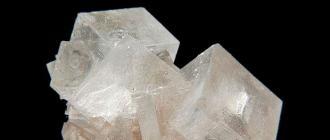Belarusian cuisine has centuries-long history, rich and interesting, and much in common with that of neighbouring Slavonic nations: Russians, Ukrainians and Poles. It’s influenced by the cuisine of Lithuania and Latvia, but has preserved its characteristics, using grain, potatoes, meat, milk and vegetables.
Belarusian cuisine widely uses potatoes
, the “second bread”
. Historically, potatoes were introduced to Belarus 75-90 years earlier than in Russia, and our climate facilitates the growth of many tasty varieties.
Grated potato is very common, and can be cooked in various ways, with methods combined. Belarusian cuisine often uses raw grated potato, shaped and fried: known as ‘tarkavanaja’ when used wet and ‘klinkovaja’ when drained. Mashed potato is sometimes combined with flour and baking soda. Traditional draniki
(potato pancakes) enjoy great popularity, served with sour cream, fried fat (pork rinds), mushrooms and various sauces.
People also cook “buĺbianiki”
(potato pies stuffed with various fillings) and “buĺbianaja babka”
(potato pudding). Pig guts can be stuffed with grated potato and then fried. Boiled potatoes are eaten unpeeled, as ‘saloniki’ (eaten with salt) while stewed potatoes are called ‘tušanka’ or ‘smažaniki’.
Cabbage, carrot, peas, beans and radishes
are typical of Belarusian cuisine.
“Sačni”
are pancakes made with flour, given various fillings, while fried ‘skavarodniki’ are made from vinegar dough, and eaten instead of bread.
Among flour and cereal dishes, the most popular are “zacirka”
(boiled dough, with milk or fat added); “kliocki”
(boiled dough, served with pork rind and onion, fried in fat); “kulieš”
(porridge from barley pea or bean flour); and “kulaha”
(porridge from rye or wheat flour and malt, served with honey or berries).
Thickened soups
prevail in Belarusian cuisine: “poliŭka”
(cereal and vegetable soup); “krupienia”
(thick millet soup); and «žur»
(an oat porridge which should turn sour before having milk (milk žur), fat, ‘viandlina’ and other products added).
According to the proverb, there’s no tastier fish than tench and no tastier meat than pork. Pork, beef and veal are widely used in Belarusian cuisine, while fried fat is the desired dressing for various flour and potato dishes. Homemade sausages
tend to be made of pork, while ‘viandlina’ is lightly smoked ham or pork loin.
Traditional meat dishes include “piačysta”
: boiled, stewed or fried cuts of young pig, rabbit or poultry or a large piece of pork or beef. Meanwhile, ‘vierieščaka’ (mačanka) are short ribs and sausages, stewed in water or kvass, brewed with flour, thick sour cream and onion sauce (as served with pancakes).
To make “vantrabianka”
, you boil offal, such as pig lungs, liver, hearts, kidneys or brains, before mincing and stuffing into pig intestine, to create a pudding. “Paliandvica”
is baked pork with spices. “Kalduny”
(potato pies) are stuffed with minced meat
(or other stuffing) and spices.
Mushrooms
are often used to garnish and add flavour. For instance, «žaronka»
is a meat dish stewed with vegetables and mushrooms, while “kapusnik”
is a cabbage soup with mushrooms.
Kvass
is a popular non-alcoholic drink, coming in several varieties: “biarozаvik”
is kvass from birch juice, while “klianovik”
uses maple juice, and “miadavucha”
is made from honey, with fermented berries and herbs. “Zbicień”
is a hot drink from honey and spices.
It should be noted that the most traditional national Belarusian dishes don’t use special ingredients. Rather, it"s the way that dishes are made that"s important: roasting, boiling, and stewing. Semi-liquid and semi-thick dishes are traditional for Belarusian cuisine, and serving dishes are often made from clay earthenware.
There are 12,179 cafes and restaurants operating at present in Belarus, seating 763,000. Of these, 7,599 are located in public places (seating 362,000).
Just 220 restaurants and cafes specialise in Belarusian national cuisine, and forty-five of these are found in Minsk. ‘Buĺbianaja’ café, ‘Kaliada’ café and ‘Buĺbaš’ café are located in the Mahilioŭskaja voblasć, while ‘Liamus’ restaurant, ‘Rodny Kut’ restaurant, ‘Usadba’ café and ‘Zadvinnie’ café are in the Viciebskaja voblasć. ‘Staroje Vriemia’ restaurant is well-known in Homieĺ, while ‘Ahinski’ restaurant, ‘Kamianica’ café, ‘U Francyska’ café, ‘Talaka’ bar, and ‘Kuchmistr’ restaurant are found in Minsk.
Not only their menus but their décor and utensils reflect our national cuisine traditions. In fact, all public catering sites are required to serve some national dishes (unless the establishment specialises in foreign cuisine).
Aiming to popularise our dishes, the Week of Belarusian Cuisine is held regularly, with restaurants and cafes offering national dishes, cooked to traditional recipes, using age-old methods. Every establishment is then obliged to charge the same price for the dish, regardless of the restaurant or café.
Mushroom soup and Belarusian soup are very popular, as are ‘zacirka’, ‘kapusnik’, ‘draniki’, ‘mačanka’ (a meat-based stew), ‘buĺbianaja babka’ (potato pudding), ‘mannik’ (manna cake), ‘buĺbianiki’, ‘vierieščaka’ and potato kliocki.
Aromatic vereshchaka, roasted juicy meat, home-cooked sausages, golden draniki, cabbage, buckwheat and pumpkin pancakes, lazanka with different layers, trickled pastries, pickles, soups with white mushrooms and herbal and berry liqueurs… the Belarusian cuisine has a lot of dishes that can pleasantly surprise even gourmets.
Here you can find the recipes which will help you cook a dinner in Belarusian style and feel the taste of Belarus’ national cuisine. Cooks from Minsk restaurants share original recipes and their own cooking secrets.
Potato pyzy
This are made from raw potato, bound with cooked potato. They take slightly longer to cook than other dumplings, but have a different flavor and texture that warrants the method. This recipe uses a cooked ground meat filling - a raw meat filling may be used, but the dumplings would take even longer to cook, and there is a danger of the potato mixture disintegrating. You may use other fillings equally successfully.

Potato sausage
Potato kishka appeared in the national cuisine in the 19th with the spread of potato (bulba), which is called "the second bread" in Belarus. The prototype of the potato kishka was even more ancient dish - sausage made from blood and buckwheat stuffed into pork intestine (kryvyanaya kishka). By the way, according to a legend, the influential noble family Kiszka got their name because the founder of the dynasty was very fond of the sausage. There are also recipes of kishka without blood, with cooked pork.
The sausage made from grated potatoes and pork (bacon and/or meat) became very popular among Belarusians as a delicious, affordable and nourishing dish.mixture disintegrating. You may use other fillings equally successfully.

Belarusian salad
This dish was introduced in the diet of Belarusians not so long ago, but it perfectly fits the traditions of the Belarusian cuisine. Salads are based on products, which have long been used in many Belarusian recipes: liver, onion, mushrooms, pickled cucumbers.

Lazanki was introduced into the Belarusian cuisine in the 16th century. The dish consists of pieces of dough made from wheat, buckwheat, or rye flour. Basically speaking, Belarusian lazanki and Italian lasagna come from one family. Belarusian cooks formed squares (triangles) from flattened tough dough, boiled them and pour fried lard with onions on top. During the lent, they put ground poppy seeds or mashed berries into the dough. Lazanki was also baked in pots together with meat or cabbage and stewed with sour cream.

Draniki is one of the most popular and famous dishes of the Belarusian cuisine.
Although there are many similar recipes for potato pancakes in various countries, Belarusian draniki is famous for its rich taste, national culinary secrets and the floury Belarusian potatoes - bulba - with their fluffy, dry texture that is perfect for making potato pancakes.
Floury Belarusian potatoes have great cooking qualities, which makes potato dishes particularly tasty.
Today Belarus is a not a world leader in potato growing, but the country is a leader in per capita production and consumption of potatoes. According to statistics, a Belarusian consumes over 180kg of potatoes per year.
Potatoes are the basis for many dishes in the Belarusian national cuisine; there are plenty of recipes. Traditional Belarusian dishes are now enhanced by new interesting products and sauces; they become healthier while remaining very tasty.

Zrazy
Zrazy - stuffed meat balls - is one of the specialties of the national cuisine. This dish traces its roots back to the Grand Duchy of Lithuania. The first written record of this dish dates back to the times of the Grand Duke and King Jagailo (15th century).
This savory dish was served to Zhigimont II who was married to Bona Sforza, a representative of the powerful Milanese House of Sforza. The Italian princess liked the Belarusian traditional dish that reminded her of Italian cotoletta alla milanese.
At first zrazy was the food of the nobility, but later it found its way to the table of every Belarusian home. The dish is called differently depending on a region; you might here the names ‘zavivantsy’ or ‘krucheniki’.
Classic zrazy are made from beef. The meet is pounded, folded and rolled with a filling inside. It can be stuffed with mushrooms, liver, vegetables, eggs and cereals.

Mazurka
Another traditional dessert of Belarusian and Polish cuisine is the mazurka. This cake with a rich taste and wonderful aroma is prepared very quickly, and it also has the property of insisting, enriched with taste over time. That is, a day or two after cooking mazurka will become even more fragrant and tastier. As a traditional stuffing for pie, poppy, raisins, nuts are used. However, often poppy is replaced with dried fruits (dried apricots, prunes) to your liking, and you can also experiment with nuts.
Draniki is one of the most popular dishes in Ukraine. Love them and constantly cooking many Housewives.
Pancakes with cabbage in Ukrainian
One of the favorite national dishes of Ukrainian potato pancakes. This dish is served to the festive table and the usual family dinner. Cooking potato pancakes - a simple process that does not take much time.
Ingredients:
- potatoes - 1 kg;
- sauerkraut - 300 g;
- eggs - 2 pieces;
- onions - 1 head;
- wheat flour - 100 grams;
- milk - 200 grams;
- greens;
- salt;
- vegetable oil for frying.
Method of preparation
Potatoes wash, peel and grate on a coarse grater into a separate bowl. Gently squeeze to remove excess juice.
Sauerkraut to press down with hands that are softer. Add to the potatoes. There may be hammered in chicken eggs.
Onion finely chop, to attach to other components. Pour the prepared milk, add the flour. Salt.
The mixture should be not too runny, but not thick. To bring it to the desired consistency, gradually adding milk or flour.
In a pan heat the vegetable oil. You may want to add a little fat or butter.
Potatoes to score a tablespoon and place on a pan. Each dranik be pressed to become flat. Fry for 3-4 minutes on each side, the tracking, so it wouldn"t burn.
Served pancakes with greens and sour cream.
Bon appetit!
Перевод
Драники - одно из самых распространенных блюд на Украине. Их любят и постоянно готовят многие хозяйки.
Драники с капустой по-украински
Одно из любимейших национальных блюд украинцев - драники. Это блюдо подается и к праздничному столу, и на обычный семейный ужин. Приготовление драников - несложный процесс, который не займет много времени.
Ингредиенты:
- картофель - 1 килограмм;
- капуста квашеная - 300 грамм;
- яйцо куриное - 2 штуки;
- лук - 1 головка;
- пшеничная мука - 100 грамм;
- молоко - 200 грамм;
- зелень;
- соль;
- растительное масло для жарки.
Способ приготовления
Картофель вымыть, очистить и натереть на крупной терке в отдельную посуду. Слегка отжать, чтобы удалить лишний сок.
Квашеную капусту обмять руками, чтобы на стала мягче. Добавить к картофелю. Туда же вбить куриные яйца.
Луковицу мелко нашинковать, присоединить к остальным компонентам. Влить подготовленное молоко, всыпать муку. Посолить.
Масса должна получиться не слишком жидкая, но и не густая. Довести ее до нужной консистенции можно постепенно добавляя молоко или муку.
В сковороде раскалить растительное масло. К нему можно добавить немного жира или сливочного масла.
Картофель набирать столовой ложкой и выкладывать на сковороду. Каждый драник прижать, чтобы он стал плоским. Обжаривать по 3-4 минуты с каждой стороны, отслеживая, чтобы ничего не пригорало.
Подаются драники с зеленью и сметаной.
Приятного аппетита!
National dishes show the soul of residents. We will tell you about the Belarusian cuisine, its features and secrets. Also we have the list of top 10 dishes that everyone should try if he wants to join the national сolouring.
History and traditions of Belarusian national cuisine
Culinary traditions of our country are rooted in pagan times. Finally they were formed during the existence of the the Grand Duchy of Lithuania. The main part of Belarusian recipes was included in the book "Lithuanian cook" in 1848. Lter the book was reissued in Belarusian language in 2013.
Adam Mickiewich is the famous Belarusian-Polish poet and in his immortal poem called «Pan Tadeusz»
he sang «Bigos»
is national dish of stewed sauerkraut and pieces of meat. By the way, it is considered as a peasant dish because the nobility and magnates ate more exotic food. On the table of the famous Radziwill dynasty were oranges, cinnamon, ginger, cloves. They brought these products fr om travels. As hunting was one of the favorite employment of the nobility, traditionally they ate different kind of quarry. They stewed, boiled and even baked it whole.

If we are talking about potatoes, we want to dispel the myth. The basis of the foundations of the Belarusian national cuisine came to our country only in 1670, but a century later it became widespread. Therefore, the common food of a simple Belarusian person consisted of such products as:
- beet greens that were kept in the cellar, also it was soured, pickled. Botvinia is a cold soup, that nowadays called “okroshka” and “сold borshch”,
- fat that was salted with the skin and used instead of meat,
- fish,
- mushrooms,
- berries.
As a rule, meat was only on holidays on the table of peasants. At Christmas they prepared porridge fr om grains. It is a festive dish of Belarusian people.
Potatoes became the main ingredient for everyday dishes. European recipes and peculiarities of national traditions of neighboring countries began to penetrate into Belarusian cuisine. There were meals from wheat flour, different salads and other. Belarusians started to eat more meat, but the statistics says that their neighbors Polish use it almost twice as large.
Top 10 Belarusian national dishes according to Belarus 24

Now it is time to tell you about 10 national dishes of Belarus:
1. Draniki. It is the most popular dish of Belarus! The recipe was borrowed from German cuisine and described for the first time in the book "Well-trained cook" in 1830. So the basis of all bases entered the ration of Belarusians less than two centuries ago.
An interesting fact is that this popular dish was called potato pancakes and the name comes from the old Russian verb "to tear". Now it has the meaning of "to grind, to grate". Usually draniki were served with other dishes. We have already told how to cook a duck with draniki in one of the issues of the program "Belarusian cuisine".
2. Vereshchaka.
As Yakub Kolas wrote in his poems"New land" and "Working people were sweating, they wanted just vereshchaka". The court cook of the king of Polish-Lithuanian named Vereshchak known in the history of Belarusian cuisine as the creator of an interesting dish. He came up with the idea to stew pieces of sausage in gravy mixed with fat. Over time, Vereshchaka appeared in the ration of rural people. They were preparing it on major holidays.

3. Botvinnik (beet root soup). Traditionally this soup made from beet greens. Nowadays we are preparing a soup from cold beetroot, but then it was very expensive for a simple peasant.
4. Kopytkiis another delicious potato dish in our list.This Belarusian plate got its original name for its shape. People prepared grated potato mass, then formed a layer of it, after it was cut into pieces as small hooves. Kopytki serves with machanka.
5. Machankai s a sausewhere other dishes should be dipped, such as pancakes or in our case is kopytki. You can watch our program and learn how to prepare it.
6. Pyachysta . As part of this dish it might be baked lamb, hole chicken or quarry. Nowadays it is rare, but earlier it was widespread. Frequently Pyachysta appeared on the princely table and it was prepared in a very interesting way. Dressed chicken or other poultry were soaked and then buried for a few days into the sand. After it was stuffed with herring mince. At first glance it is incompatible products, but in fact meat was very delicate and tasty.
7. Nalisniki
called Belarusian pancakes, but it is wrong. Nalisniki is not a separate dish. They are served with a variety of different fillings, such as kulaga (hasty pudding)or curd cheese.

8. Beer soup . Our top would be incomplete without another traditional Belarusian soup, wh ere the main ingredient is beer. The history of this dish dates back to the 16-18 centuries, when beer was very popular drink in Belarus.
9. Krambambula is kind of strong alcoholic drink with honey that consist of alcohol, honey and spices. All noble banquets were with Krambambula on the table.
10. Sbiten is traditional Belarusian non-alcoholic drink with herbs.
An interesting fact is that it might be served so cold as hot,no matter what the time of a year. Cold Sbiten is perfect for refreshing in the summertime and hot drink is very good in cold weather.
Our program "Belarusian cuisine" is the best recipes of the national cuisine.
Culinary and historical show "Belarusian cuisine" is a program wh ere every new unlock cooking secrets of old dishes in modern conditions. You will learn how to cook traditional draniki, bake quarry in a right way and prepare delicious home kvass. Watch our program and discover the culinary soul of Belarus!
Билет № 7. Belarusian Cuisine
Do you like cooking? Why (not)?
What questions will you ask a friend who has invited you to a pot-luck party?
Let’s talk about Belarusian national cuisine (food). What can you tell me about eating habits in Belarus?
Modern Belarusian cookery is based on old national traditions. Dishes from potatoes are very common in Belarusian cuisine. Potatoes are called ”the second bread” in Belarus. Potatoes are included into many salads, served together with mushrooms and meat; different pies and baked puddings are made from it. The most popular among the Belarusians are traditional draniki, thick pancakes, prepared from shredded potatoes. A lot of place in the diet of the Belarusians belongs to meat and meat products, especially to the pork and salted pork fat. The salted pork fat is used slightly smoked and seasoned with onions and garlic. Dishes prepared from meat are usually served together with potatoes or vegetables such as carrot, cabbage, black radish, peas, etc. Belarusian national cuisine also offers fresh, dried, salted and pickled mushrooms and also various berries such as bilberry, strawberries, raspberries, cranberry and some others. An integral part of any dinner is soup. It can be hot or cold. Belarusians are fond of borscht, a thick and rich beet and cabbage soup made with grains, potato and meat. The Belarusian khaladnik , a cold borscht made of beets, beet leaves and served with sour cream, hard-boiled eggs, and boiled potatoes will be pleasant on a hot summer day. Another popular Belarusian dishes are “zatsirka” and “krupnik” (soup made from cereals). Every possible salads are prepared from cabbage, carrots, beans.
Do you like cooking? Why? Why not?
A. Yes, I do. My mother is a very good cook and she taught me to cook pizza, pancakes and roast chicken.
B. In fact, I don’t like cooking. I think it’s boring. My mum does it better. I only help her in the kitchen.
C. No, to tell the truth I don’t like cooking. It takes a lot of time and frankly speaking I am not very good at cooking and my dishes are not always tasty.
What questions can you ask a friend who has invited you to a pot-luck party?
I have never been to a potluck party. It’s probably amazing. Of course I will have to find out some things beforehand:
What is the theme of your potluck party?
How many people have you invited to the party?
Are you going to make a list of dishes?
What dish shall I bring?
Where will the party take place?
Shall I bring some plates or cups?
Shall I bring some drinks?
Who else is invited to the party?
What national dishes can you recommend a tourist to taste in Belarus?
When people come from other countries they usually look for something special and traditional in this country. So I think it would be a good idea to recommend them to eat our draniki. To my mind this dish is a speciality of our country, it is delicious. You can also taste borchs and holodnik.
Can you tell me how to cook one of your favourite dishes?
Frankly speaking I am not very fond of cooking but I can tell you how to prepare draniki. First you should peel some potatoes, then you should grate them, add an egg , some flour, some salt, mix everything and make little pancakes on a frying pan. Serve your draniki hot with sour cream. Bon appetite!






